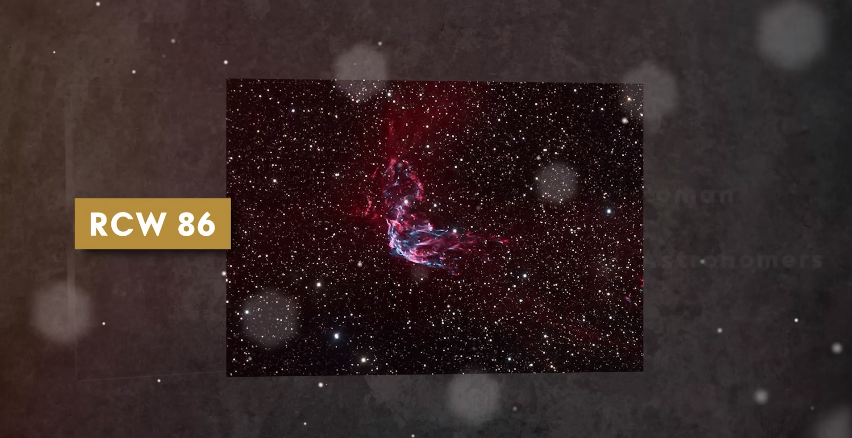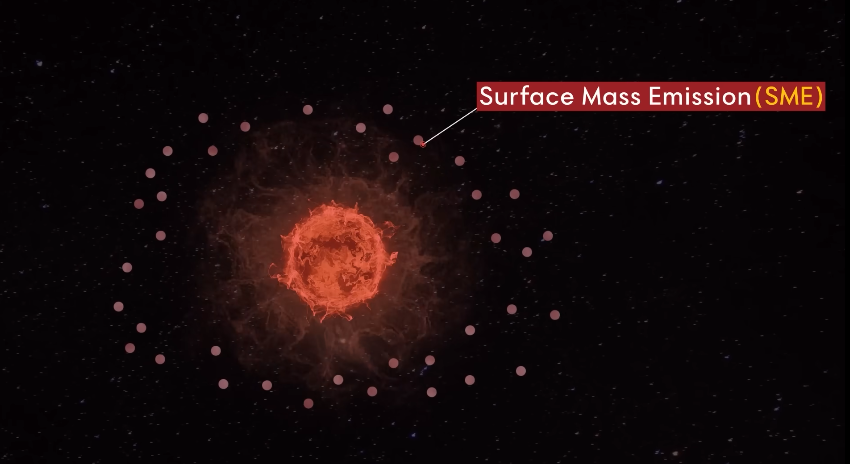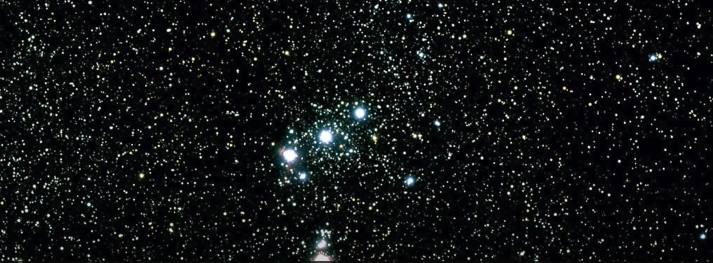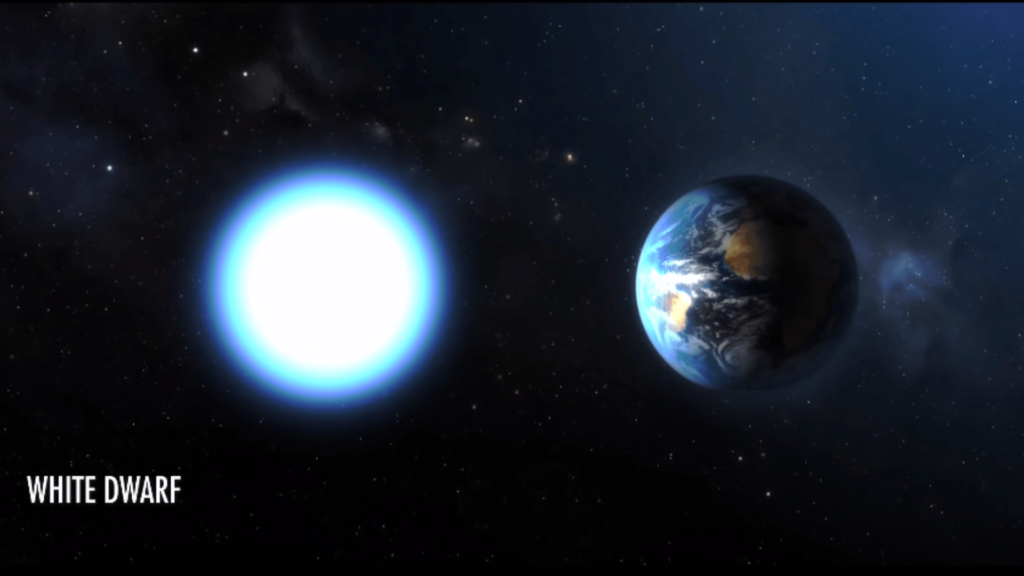Betelgeuse Star is the closest red giant star to our Earth. NASA is also afraid of this red giant star, what is the reason behind it, we will discuss some things about it.
Information about Betelgeuse Star
Relative
| Apparent Magnitude | +0.44 |
| Distance | 498 ly |
Physical
| Spectral Type | M1-M2la-lab |
| Color Index | +1.85 |
| Temperature | 3,540 K |
| Luminosity | 65,000×Sun |
| Absolute Magnitude | -5.48 |
Variability
| Type | Pulsating (SRC) |
| Magnitude Range | +1.30 to +0.00 |
| Period | 2,340 days |
Designations
| Catalog IDS | Alpha Orionis
58 Orionis HR 2061 HP 27989 HD 39801 TYC 0129-01873-1 WDS J05552+072A WDS Jo5552+0724Aa,Ab WDS J05552+0724Aa,Ac |
Betelgeuse Star

The red giant Betelgeuse Star closest to our Earth is seen above in these images. Among them, the first image was captured in November 2019, the second image between November and December was also captured in 2019, and the third image was captured in April 2020. The rest of the red giant star bursts are slow dim bright, but here it is clear from these pictures that Betelgeuse Star is becoming dim bright very fast. The result of which is that Betelgeuse star can explode at any time.
Actually, according to our astronomical record, about 1837 years ago, Ancient Roman and Chinese Astronomers observed a supernova. What we know today as RCW 86.

The explosion of this supernova was so dangerous that two moons were visible at night and two suns during the day for about eight months. Now imagine if the Betelgeuse star explodes, the view is going to be even worse. It is said that at that time ten moons will be seen in the sky at night and ten suns during the day.
Mystery of Nova Explosion
About 359 million years ago during the Devonian-Carboniferous Period, the largest mass extinction of that century, The End Devonian Extinction, was caused by the extinction of a supernova near the Earth.

According to scientists, whenever a star is in its last stage, it starts to eject energy and matter from inside itself, which is called Surface Mass Emission (SME) in the language of astronomy. This suggests that the Betelgeuse star will eject as much matter and mass as Mount Everest. Betelgeuse Star has been noted as dim bright for thousands of years.

The Betelgeuse star was first observed by Indian astronomers in the Orion Constellation. A century later, China began to mention the color of this star. The color of Betelgeuse was whitish-yellow. But during the second century, it is not known how Ptolemy the astronomer, when he saw its color, its color turned orange exactly as it appears to us today. The biggest reason for such dimming among stars like these is the black hole.
How Black Hole Connect?
Some time ago the Max Plant Society and Japanese Astronomers made a model of the collision of a black hole and a neutron star. In this model, Low-Matter-Density is shown in blue and High-Matter-Density in pink.

With the help of these colors, scientists know that as soon as a neutron star comes in contact with a black hole, 80% of its matter goes inside the event horizon of the black hole. And the remaining 20% matter is visible from the accretion disk. So the meaning is clear that if the mass of Betelgeuse is five million times more than that of neutron star, then there will be a black hole on the other side of it, then Betelgeuse Star is dimming.
Gravitational Darkening
Here, scientists told the Royal Astronomical Society that if a star dims, then there must be an object larger than the star around it that squeezes the waves from that star, but there was a problem here that even in the distance of Betelgeuse, there is no massive object. There was no object, then everyone’s idea here was that Betelgeuse Star has a black hole because it is invisible.
Here, according to some scientists, the real reason behind the Betelgeuse, which is more effective than the black hole, may be Gravitational Darkening, which comes from the rotation of the star. When the rotational speed of the star is fast enough, then its shape becomes like an oblate spheroid. Because of this, the gas in the equators of these stars is further away from the core than in its poles, due to which the equatorial gas becomes weaker. According to this theory, when the nuclear fusion of a star starts to decrease, that star goes out and because of this any star starts dimming.
Estimates of Betelgeuse Star
Another research has come out about Betelgeuse Star. It has been said that the distance and size of Betelgeuse Star has not yet been determined by the current light. If we talk about the present estimate, Betelgeuse is about five hundred light years away from us. Suppose if it explodes tomorrow, its light will take 500 light years to reach us. By then the energy of the Betelgeuse Star will also be greatly weakened. Even if something happens to us, there will be some problems with our GPS system and satellite and nothing else.
But as said that we do not know the distance of Betelgeuse Star, if the distance of this star turns out to be close enough, then we can see it. In the pictures you have seen at the top, we can see the dimming of Betelgeuse Star. It is known that there is a big dust cloud between our earth and Betelgeuse Star which is kind of hiding it. NASA itself has said that the dust cloud is ejected from Betelgeuse Star itself. Which is also the biggest evidence for us that Betelgeuse Star is going to explode in few years.
Now, according to the estimate we have today, NASA has made a rough estimate. According to him, this event can probably be seen about one hundred thousand years from today.

